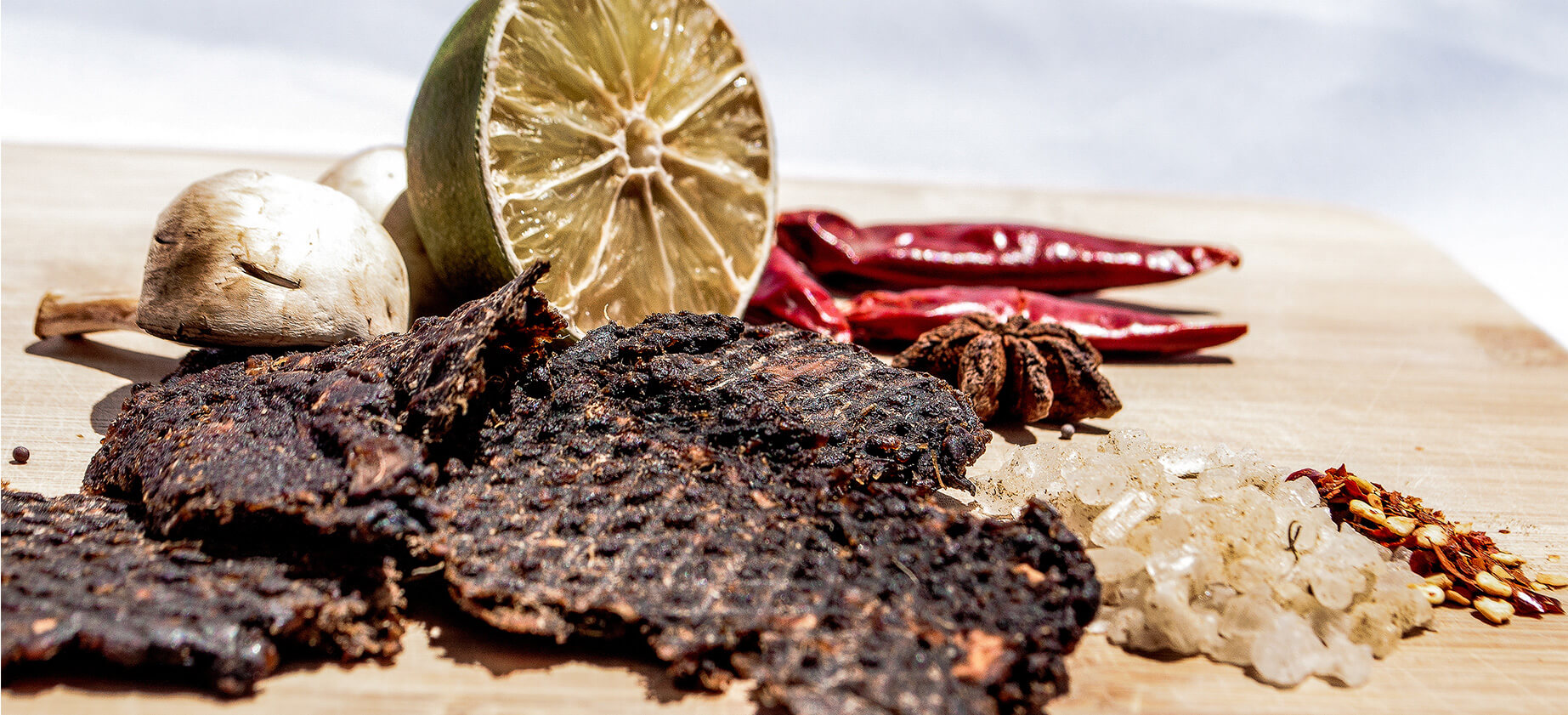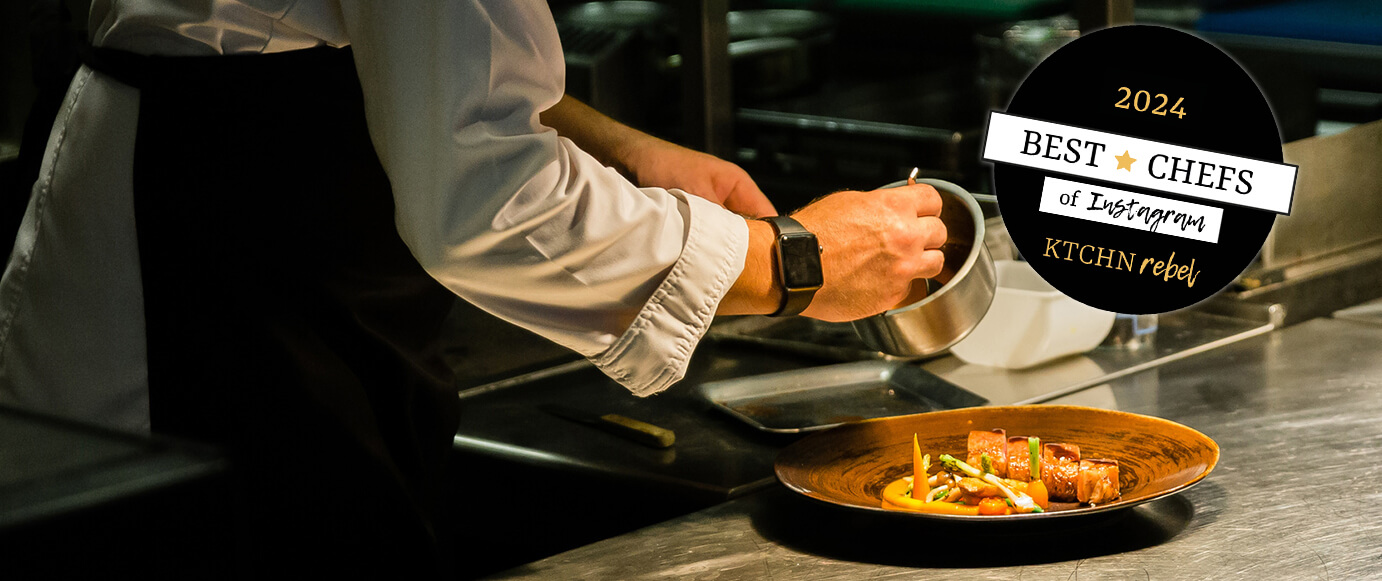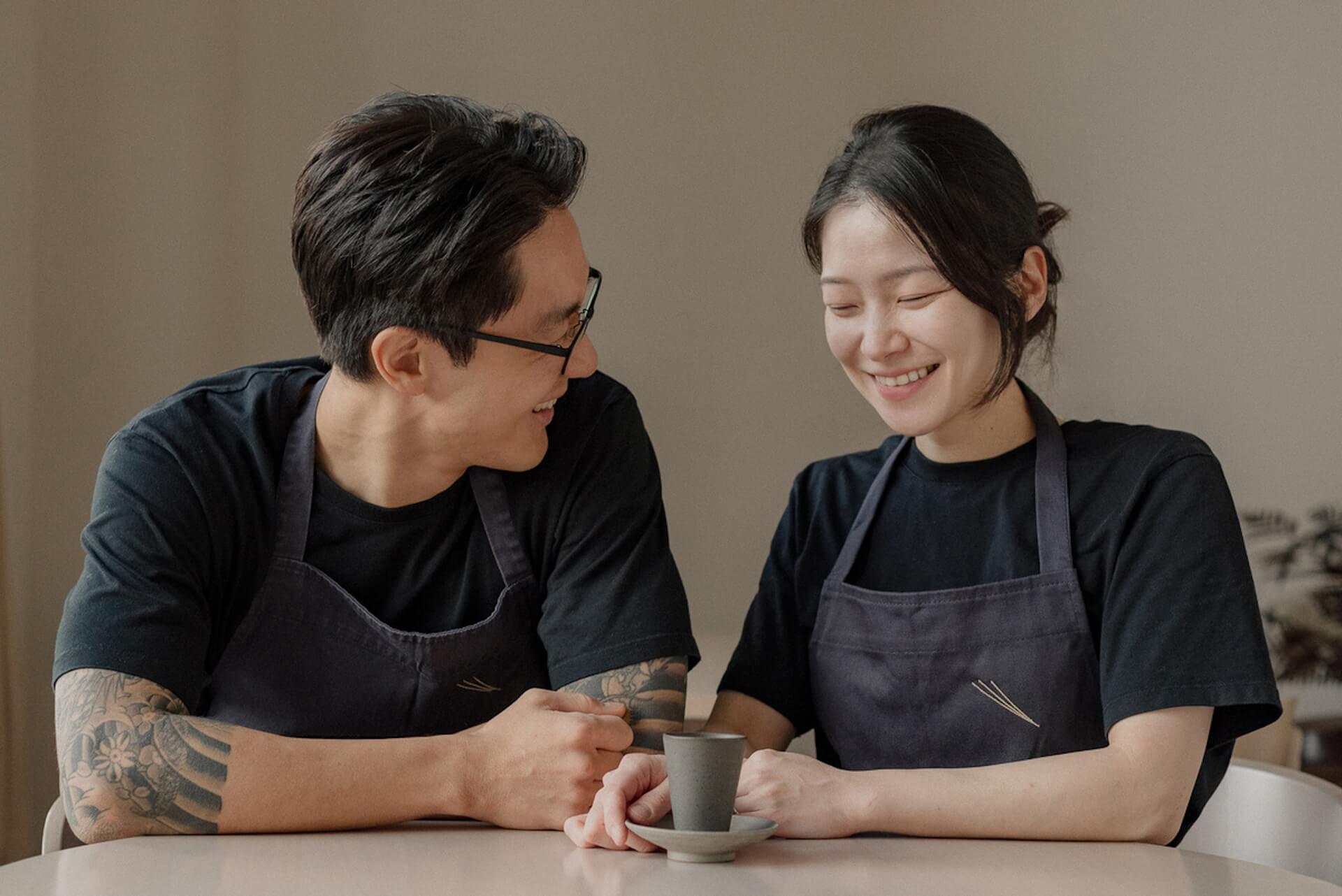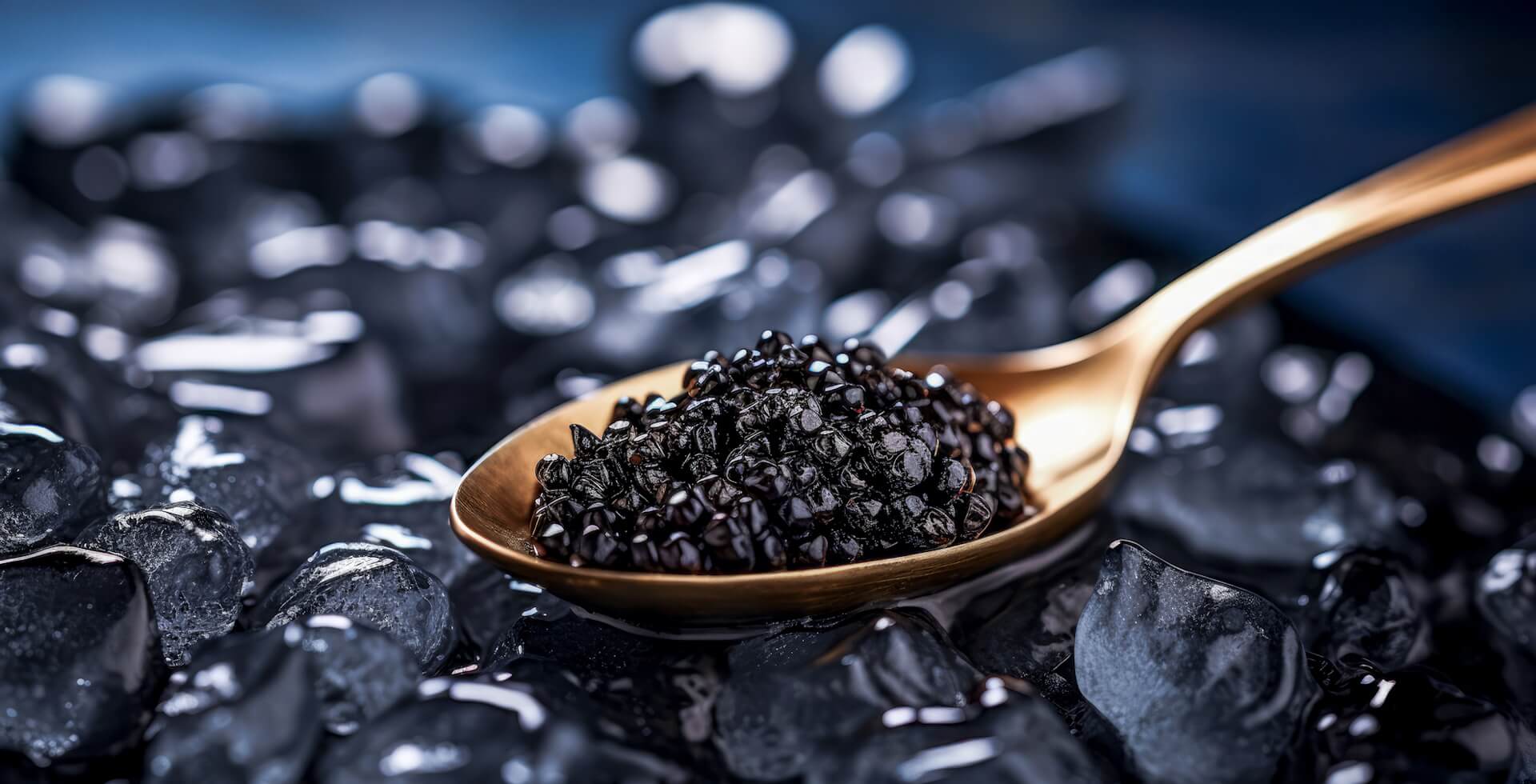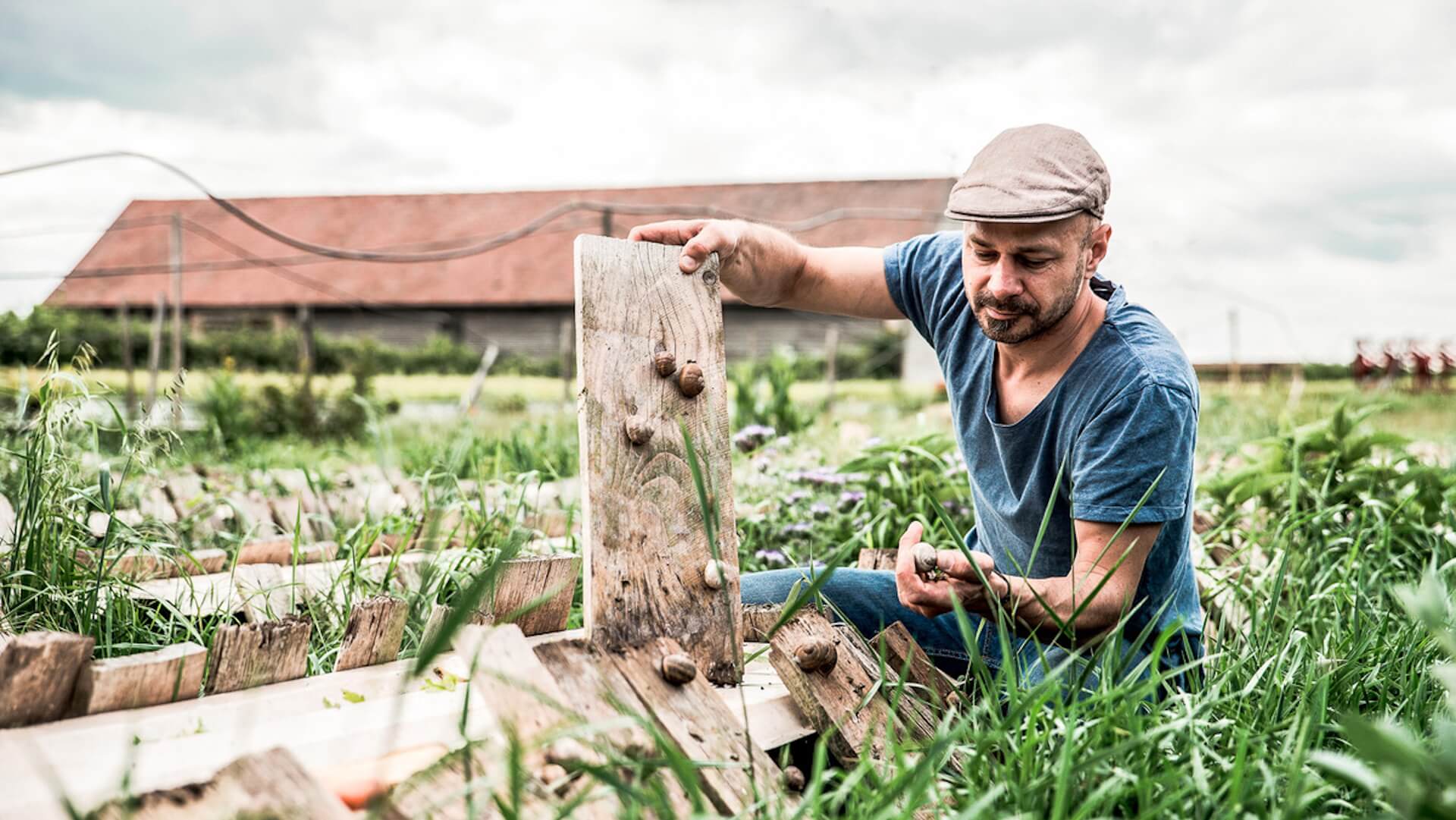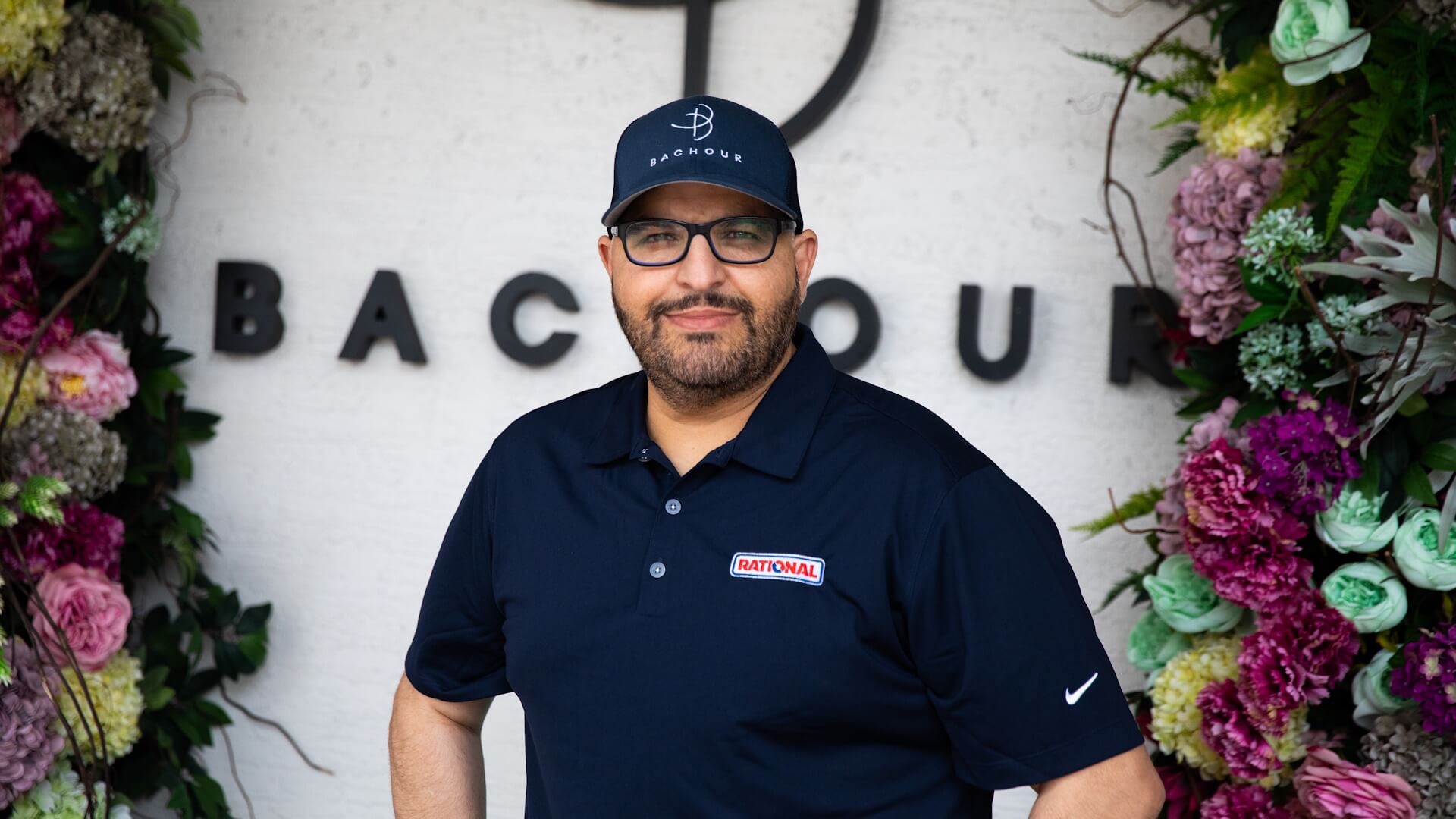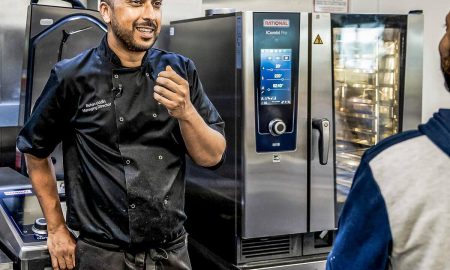Chau learned about Mills’ plan online and encouraged him to act on it. The two food hackers now see each other three times a week, when Chau strolls into Mills’ Tinker Kitchen on 22nd Street in the Mission District, tosses his backpack to the floor, and starts experimenting.
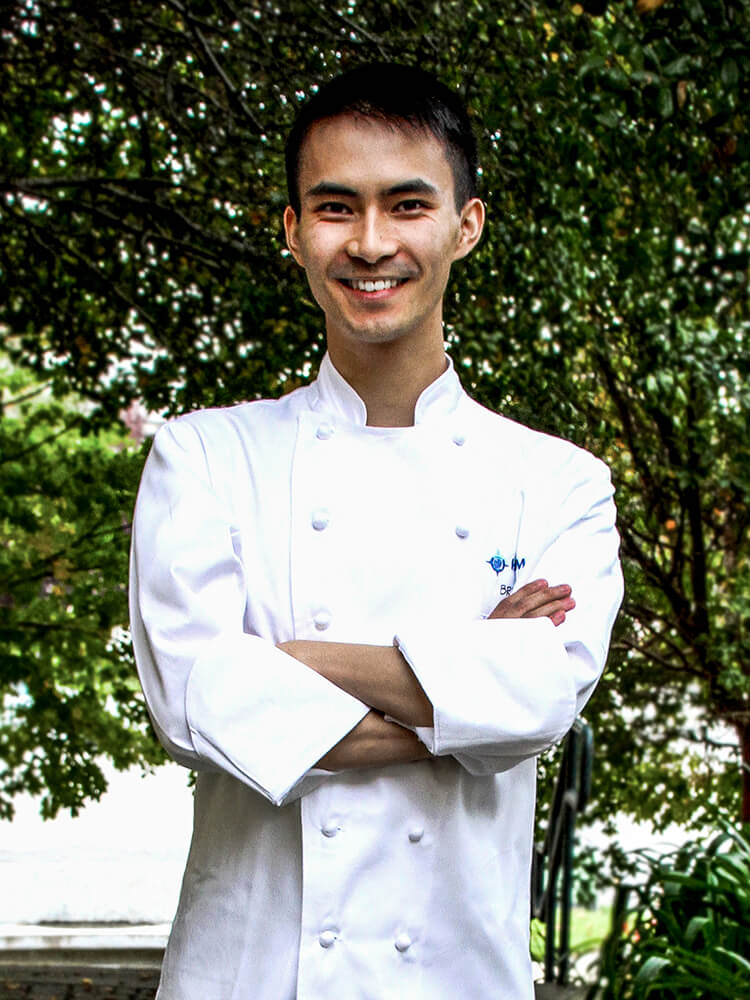
Image: Brian Chau
Today is one of those days. The 27-year-old UC Davis graduate sets a cookbook onto the long wooden table: Kintsugi Wellness by Candice Kumai, a treatise on the Japanese art of feeding the soul as well as the body. Right now, Chau is working on a new matcha cookie; Kumai already has one in her culinary arsenal, but she wants to open her own cafe in Miami, where she plans on serving the cookies as frozen-yogurt sandwiches. She wants the cookie to have a different consistency, which is where Chau’s food science comes in.
Chau, who has Vietnamese and Chinese roots, is slim, structured, and quick. Before striking out on his own, he worked for the Kerry Group, the world market leader in food additives and flavorings. After that, he moved to Ghirardelli Chocolate Company, which has been part of Lindt & Sprüngli since 1998. Today, Chau works on a per-project basis, either alone or with other colleagues. When his first test cookie comes out of the combi-oven, he gives us a taste of his baking… as well as his knowledge.
So, Brian, how does a person become a food scientist?
I’m glad you asked! A lot of people don’t even know that that’s a real job. People know chefs and nutritionists. Our work involves both of those fields, but we also go way beyond that. We consider culinary and nutritional aspects as well as things like marketing and packaging. The University of California Davis, has a special food science and technology program, where you can specialize in things like chemistry, microbiology or engineering, and also take courses in logistics and procurement. It’s quite a multidisciplinary approach. And trust me, you need good basic knowledge of physics, chemistry, and biology in order to understand food. Take this matcha cookie, for example: we have the smell, the texture, the taste. If you don’t know chemistry, you can’t analyze all of that. We work with things like pH measurement equipment and hygrometers to get to the bottom of those factors.
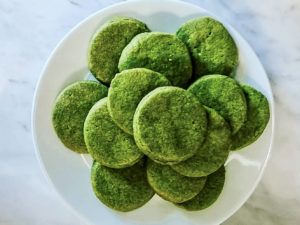
Matcha Cookies – Image: Brian Chau
What difficulties do you face when doing that?
When a recipe is accepted – in other words, we’ve found a formula and the product is going into mass production – it gets tricky all over again, because you want to make sure that quality and taste will always remain consistent. But when you convert a recipe for industrial manufacture in mass quantities, it changes the taste. You can’t just multiply salt and sugar amounts by the same factor, for example. One reason is that salt forms crystals and clumps in large quantities. Those things have to be accounted for.
Why did you become a food scientist?
My dad, who also studied at UC Davis, actually wanted me to become a doctor. But here in San Francisco, food science is a major topic – California has a tradition in the field. Plus, I grew up on Vietnamese and Chinese food, and I’ve been cooking for myself since I was 13 years old. I convinced my dad by arguing that I could also work scientifically in the food and nutrition field.
When you’re developing a new recipe, how do you go about it?
Well, there are two approaches. When I’m developing a totally new product, like a protein bar or a mushroom jerky, I start by having a private meeting with the customer: What are your criteria, what do you want to achieve? What’s your target audience, how will it be packaged? Where will the product be sold? What should it cost? Then I start developing a prototype. Usually it takes hundreds of attempts to fulfill all the requirements. Other times, they’ve already got a recipe, but they want to rework the formula. Like with this matcha cookie. She wanted to use the recipe in the cookbook to develop a commercial ice cream sandwich. The liquid that the frozen yogurt exudes meant that the cookie needed to be reformulated.
Here at Tinker Kitchen, you have all kinds of equipment available to you. Which are you using with the matcha cookie?
I worked with the combi-oven here. The ice cream sandwich is going to be sold in Miami, where the humidity is a lot higher than here in San Francisco. The combi-oven is excellent for incorporating those type of factors into the process.
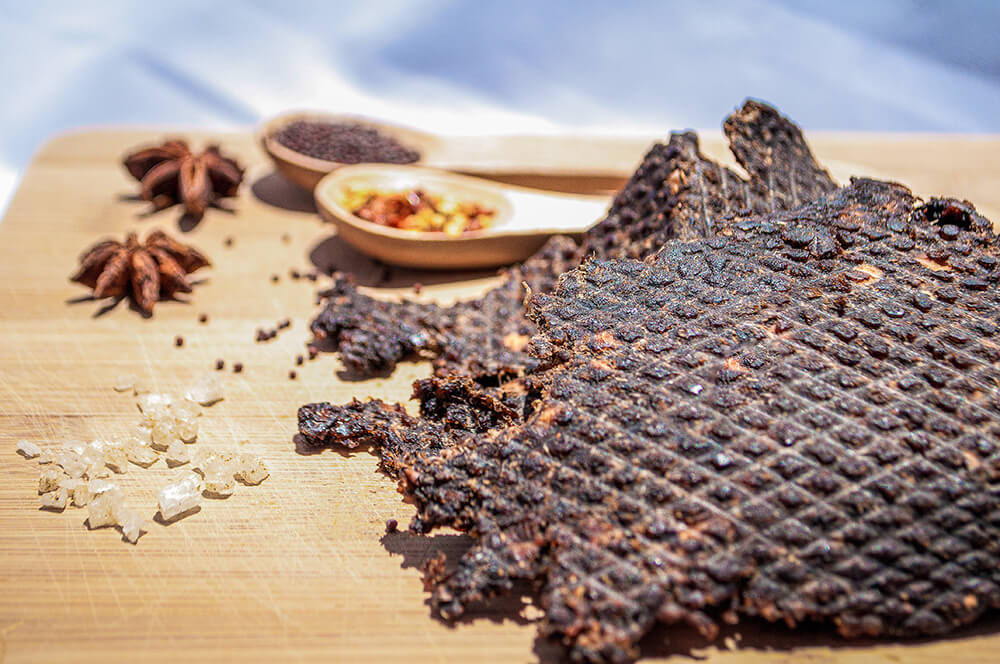
MycoKind Mushroom Jerky / Image: Anh Thoa Pham
What are you most interested in: the chemical processes, or experimenting with ingredients?
If I had to rank them, I guess I would say that the chemical processes are more fun. Experimentation can eat up a lot of time before you reach a satisfactory result. It can be really frustrating. The chemistry part is usually easier. Take the mushroom jerky we were just talking about: you increase the sugar content, it increases the stickiness. Then you have the choice of whether to use solid or liquid sugar, and those results are relatively predictable as well, so you can come up with a result in three or six months. Pure experimentation sometimes takes up to a year. Most of my customers have a deadline, of course, so I don’t have an infinite amount of time.
How long will redeveloping this cookie take, for example?
I started in March of this year, and it’s supposed to be finished by mid-August. Six months isn’t a huge amount of time for that kind of development work, but it’s standard for my customers. Some things go faster, obviously. Developing a new tea mixture goes faster, for example. But other things take quite a long time. Biotech is booming right now in California, and I helped work on a vegan meat substitute. There, you can’t possibly get anything done in under a year.
What was your most interesting project?
The mushroom jerky. It was just really interesting to figure out the right texture. Mushrooms are 80 to 90 percent water; the rest is fiber, protein, fat, and carbohydrates. There, too, I used the combi-oven to help me work out the right amount of firmness. It was a lot of fun!


